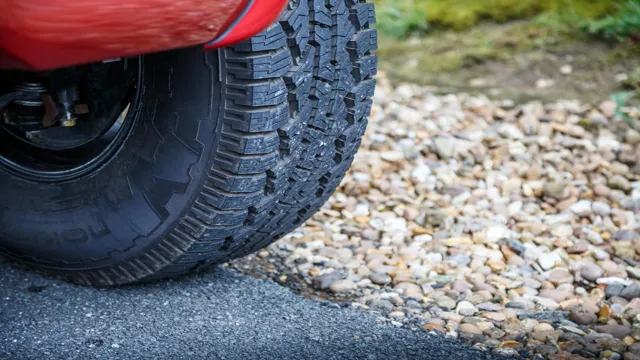Smooth Ride Ahead: Ultimate Guide on How to Adjust Rancho Shocks for Maximum Performance
Got some new Rancho shocks for your truck or off-road vehicle? Congratulations! You’re in for a smoother ride and better handling on tough terrain. But before you hit the road or trail, you’ll need to make sure your shocks are adjusted just right. Adjusting Rancho shocks can seem daunting, but it’s actually fairly simple.
And once you’ve done it, you’ll have a better understanding of how your vehicle’s suspension works. In this blog, we’ll walk you through the process step-by-step. Whether you’re a seasoned mechanic or a DIY enthusiast, we’ll make sure you get it right.
Understanding Your Shocks
Adjusting your Rancho shocks can greatly improve the performance of your vehicle, both on and off-road. It’s important to understand the role of your shocks and what adjustments you can make to optimize their performance. Rancho shocks are designed to absorb and dissipate the energy from bumps and rough terrain while also providing stability and control.
To adjust your shocks, you’ll need to look at factors such as vehicle weight, tire size, and driving conditions. You can adjust the rebound and compression settings to tailor your shocks to your specific needs. Too much rebound can cause your vehicle to bounce around, while too little can cause it to feel sluggish.
Similarly, too much compression can lead to a harsh ride, while too little can cause excessive body roll. By making small adjustments and testing your shocks on different terrain, you can find the perfect setting for your driving style and preferences.
Parts of Rancho Shocks
Rancho shocks are an essential part of your vehicle’s suspension system and provide a smooth ride on rough terrain. Understanding the different parts and components of Rancho shocks can help you maintain and repair them, keeping your vehicle running smoothly. There are several parts of Rancho shocks, including the shock body, piston, valve stack, oil, and nitrogen gas chamber.
The shock body is the outer casing that protects the shock’s internal components from damage and helps dissipate heat. The piston moves up and down within the shock body, compressing the oil and nitrogen gas as it travels. The valve stack controls the flow of oil and gas through the shock, allowing it to respond to different types of impacts.
The oil in the shock helps dampen the movement of the piston, while the nitrogen gas chamber maintains pressure within the shock. By understanding these parts and how they work together, you can diagnose and repair problems with your Rancho shocks, keeping them in top condition for your next adventure. So, don’t forget to check the different parts of your Rancho shocks to keep your ride comfortable and safe on any terrain.
How Shocks Work
Shocks are an essential component of your vehicle’s suspension system, but how do they work? Essentially, shocks help to absorb the bumps and jolts of the road, providing a smoother and more comfortable drive. They work by using hydraulic fluid to slow down the movement of your vehicle’s suspension, reducing the amount of bounce and sway that you feel as you drive. When you hit a bump in the road, the shock compresses, and the hydraulic fluid is forced through small orifices, creating resistance that slows down the returning spring.
This process helps to keep your tires in contact with the road, improving tire grip and handling while reducing wear and tear on your vehicle’s suspension system. Regular maintenance and replacement of worn shocks are essential for the safety and comfort of your ride. Remember to have your shocks inspected by a professional mechanic every 50,000 miles; signs such as uneven tire wear, bouncing and dipping, and a rough ride are all indicators that your shocks may need replacement.
So, the next time you hit a bump in the road, you can rest assured that your shocks are hard at work to keep you comfortably and safely headed to your destination.
Determining Adjustment Settings
Adjusting Rancho Shocks can make a big difference in the way your truck handles both on and off-road, but the process can be daunting if you’re unsure of what settings to use. First, you need to consider what your primary use of the vehicle is, as this will determine the ideal settings. For example, if you use your truck for off-road adventures, you may want to set your shocks to a higher stiffness level to improve stability and reduce body roll.
Conversely, if you mainly drive your vehicle on paved roads, you may want to adjust your shocks to a softer setting to improve the ride quality. The compression and rebound settings also play a crucial role in your vehicle’s handling, with faster settings providing a stiffer ride and slower settings yielding a smoother ride. To find the ideal settings for your vehicle, it’s best to consult your Rancho Shock’s user manual and experiment with different settings until you find the perfect combination for your driving needs.
With a bit of trial and error, you’ll be able to get the most out of your Rancho Shocks and enjoy a smooth and stable ride wherever your travels take you.
Vehicle Load
When it comes to determining the adjustment settings for your vehicle load, there are a few factors to consider. First and foremost, it’s important to know the weight of your load. Overloading your vehicle can be dangerous and lead to accidents, so it’s crucial to make sure you’re not exceeding its weight capacity.
Once you know the weight, you’ll need to adjust your vehicle’s suspension settings accordingly to ensure optimal performance. This includes adjusting the shock absorbers, springs, and anti-roll bars as needed. If you’re unsure about how to properly adjust your suspension settings, it’s always best to consult with a professional mechanic who can offer guidance and help ensure your safety on the road.
Ultimately, taking the time to properly adjust your vehicle’s settings based on your load can make for a much smoother and safer ride.
Tire Size
When it comes to determining adjustment settings for your tires, it’s important to consider the size of the tires first and foremost. The size of your tires can greatly affect how your vehicle performs on the road, as well as how it handles and corners. In order to get the most out of your vehicle, it’s important to understand the correct adjustment settings based on your tire size.
This can include things like tire pressure, wheel alignment, and other factors that can impact your ride. It’s always a good idea to consult with a qualified mechanic or tire specialist who can help you determine the best adjustment settings for your specific tire size. Taking the time to get this right can help extend the life of your tires, while also keeping you safe on the road.
So whether you’re driving a car, truck, or SUV, take some time to learn about your tire size and how to adjust your vehicle accordingly. Your car (and your wallet) will thank you!
Road Conditions
Determining adjustment settings for road conditions is a crucial task that ensures the safety of all drivers on the road. The settings used to adjust the suspension of a vehicle vary according to the type of road surface, profile, and condition. A smooth surface like asphalt requires a soft setting for the suspension, while rough roads and potholes require a stiffer setting to prevent the car from bottoming out or bouncing.
Additionally, if driving off-road or on slippery surfaces, like mud or snow, the suspension should be adjusted accordingly to maximize traction and stability. Fortunately, most modern cars have adjustable suspension settings that can be easily set by the driver, ensuring that the car is stable and safe while on the road. Taking the time to determine the appropriate settings for your vehicle is a small investment in safety, giving you the peace of mind to focus on the road ahead.
Adjusting Your Shocks
If your vehicle is equipped with Rancho shocks, it’s important to know how to adjust them. First, determine the purpose of the adjustment; whether it is for off-road use, towing, or daily driving. Then, locate the adjustment knob on the shock and turn it in a clockwise or counterclockwise direction to increase or decrease firmness respectively.
It’s important to make adjustments in small increments and test the shocks on a variety of terrain to ensure the desired performance is achieved. Additionally, consider the weight of your vehicle and any added accessories when making adjustments. With proper adjustments, your Rancho shocks can provide improved handling, stability, and overall ride quality.
Step-by-Step Guide
Adjusting your shocks can make a significant difference to the handling of your vehicle and the comfort of the ride. Here’s a step-by-step guide to help you adjust your shocks like a pro. The first step is to park your car on a flat surface and then locate the shocks.
They are usually located at the top of the wheels and are identifiable by the metal or plastic cylinders. Next, set your vehicle to the minimum ride height, so the shocks are fully extended. Then, loosen the top nut of the shock absorber and adjust the bottom nut according to your preference.
Tighten the top nut once you’re done adjusting and repeat the process for each shock. Finally, take your car for a test drive to see if the shocks are performing as expected. With these simple steps, you can adjust your shocks to suit your driving style and achieve a smoother ride.
Tips and Tricks
Adjusting your shocks can make a huge difference in your ride quality and overall vehicle performance. Before making any adjustments, it’s important to understand how shock absorbers work. Shocks are designed to dampen the movements of your vehicle’s suspension, helping to keep your tires firmly in contact with the road.
If your shocks are too soft, your vehicle will bounce and sway, making it difficult to maintain control. If your shocks are too stiff, your ride will be jarring and uncomfortable. To adjust your shocks, you need to first determine what type of shocks you have and then find the adjustment controls.
Some shocks are adjustable from the outside, while others require disassembly to make adjustments. Once you’ve located the adjustment controls, it’s important to make small adjustments and test your vehicle after each adjustment. This will help you find the perfect balance between comfort and performance on your ride.
Testing Your Shocks
Adjusting Rancho shocks is an important maintenance task for off-road enthusiasts who want to maximize their vehicle’s performance. To test your shocks, first, check the owner’s manual for recommended PSI and ride height settings. Once you have the correct settings, drive the vehicle on rough terrain at varying speeds to see how the shocks perform.
If your vehicle bottoms out or bounces too much, it might be necessary to adjust the shocks. To adjust the shock’s compression and rebound settings, locate the shock’s adjustment knob and turn clockwise or counterclockwise as needed. Always make sure to adjust both shocks on an axle evenly.
By taking the time to test and adjust your shocks, you can ensure that your vehicle is handling rough off-road terrain safely and efficiently.
Conclusion
Adjusting your Rancho shocks is like dialing in the perfect cup of coffee – it’s all about finding that sweet spot. With a little bit of know-how and experimentation, you can fine-tune your suspension to ride smooth and steady like a well-crafted latte. So don’t be afraid to get your hands dirty and treat your vehicle to the ultimate pick-me-up – the right adjustments can make all the difference in your ride!
FAQs
What is the process to adjust the ride height on Rancho shocks?
The ride height on Rancho shocks can be adjusted by adjusting the spring preload on the shock absorber.
How can the damping rate be adjusted on Rancho shocks?
The damping rate on Rancho shocks can be adjusted by turning the external adjuster knob located on the shock absorber.
Can Rancho shocks be installed on lifted or lowered vehicles?
Yes, Rancho shocks can be installed on lifted or lowered vehicles, but it is important to select the correct shock absorber based on the vehicle’s specific lift or lowering kit.
What is the recommended maintenance schedule for Rancho shocks?
It is recommended to inspect the shocks every 12,000 miles and replace them every 50,000 miles for optimal performance and safety.






